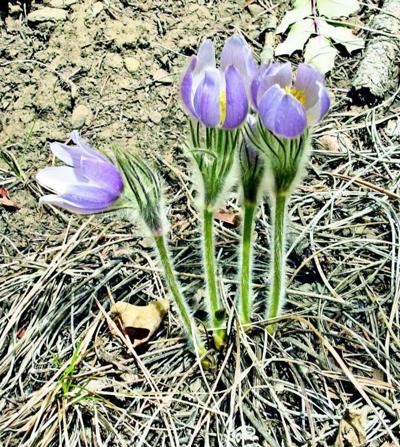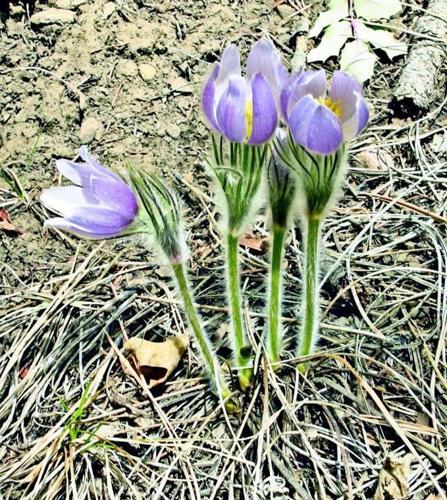Pasque flower (Pulsatilla vulgaris) is a low-growing perennial plant that forms clumps that spread over time. It is a member of the Ranunculaceae family, which is Latin for “little frog.” The name was given to the family because a group of plants in this family grow where frogs live.
The pasque flower has thick, stout stems that rise 6-8 inches off the ground, and on each stem is one flower with five-eight petals. The range of color in the petals is from dark lavender to almost white with yellow stamens in the center.
Below the flower, around the stem is a leaf covered in silky hairs, as is the rest of the plant.
The fruit of the plant is a plum that is achenial, which means that one seed is attached to the ovary wall, like a strawberry seed. These characteristics make this species distinctive season-long.
Why is the flower covered in hairs you may ask? Well, if your home was in the tundra, you would wear a fur coat too.
One of the earliest spring bloomers, it pushes through snow and old weathered grass in well-drained soils, from the prairies to mountain meadows. The flower occurs at the top of Wheeler Peak (13,110 feet), as well as up Taos Canyon at about 8,500 feet.
According to Carl Schreirer in Field Guide to “Wildflowers of the Rocky Mountains,” pasque flower is derived from the old form of the word pasch and refers to the feast of the Passover at Easter. The pasque flower is found from Alaska to Washington state, along the northern plains to Illinois, and along the eastern slopes of the Rocky Mountains to Texas.
American Indians had many medicinal uses for this plant, including its primary use as a sedative and for treating coughs. Pasque flower is highly toxic and produces toxins which slow the human heart. So understandably, it should not be used without the supervision of a medical doctor.
This picture of the pasque flower is what I call a two-fer, two plants in one picture. The second plant I’ll point out is a dried leaf of an Oregon grape (above the pasque flower). This is the state flower of Oregon, and there is much to say about this plant as well, which I will save for a future article.












































(0) comments
Welcome to the discussion.
Log In
All comment authors MUST use their real names. Posts that cannot be ascribed to a real person
will not be moderated.
Keep it Clean. Please avoid obscene, vulgar, lewd, racist or sexually-oriented language.
PLEASE TURN OFF YOUR CAPS LOCK.
Don't Threaten. Threats of harming another person will not be tolerated.
Be Truthful. Don't knowingly lie about anyone or anything.
Be Nice. No racism, sexism or any sort of -ism that is degrading to another person.
Be Proactive. Use the 'Report' link on each comment to let us know of abusive posts.
Share with Us. We'd love to hear eyewitness accounts, the history behind an article.